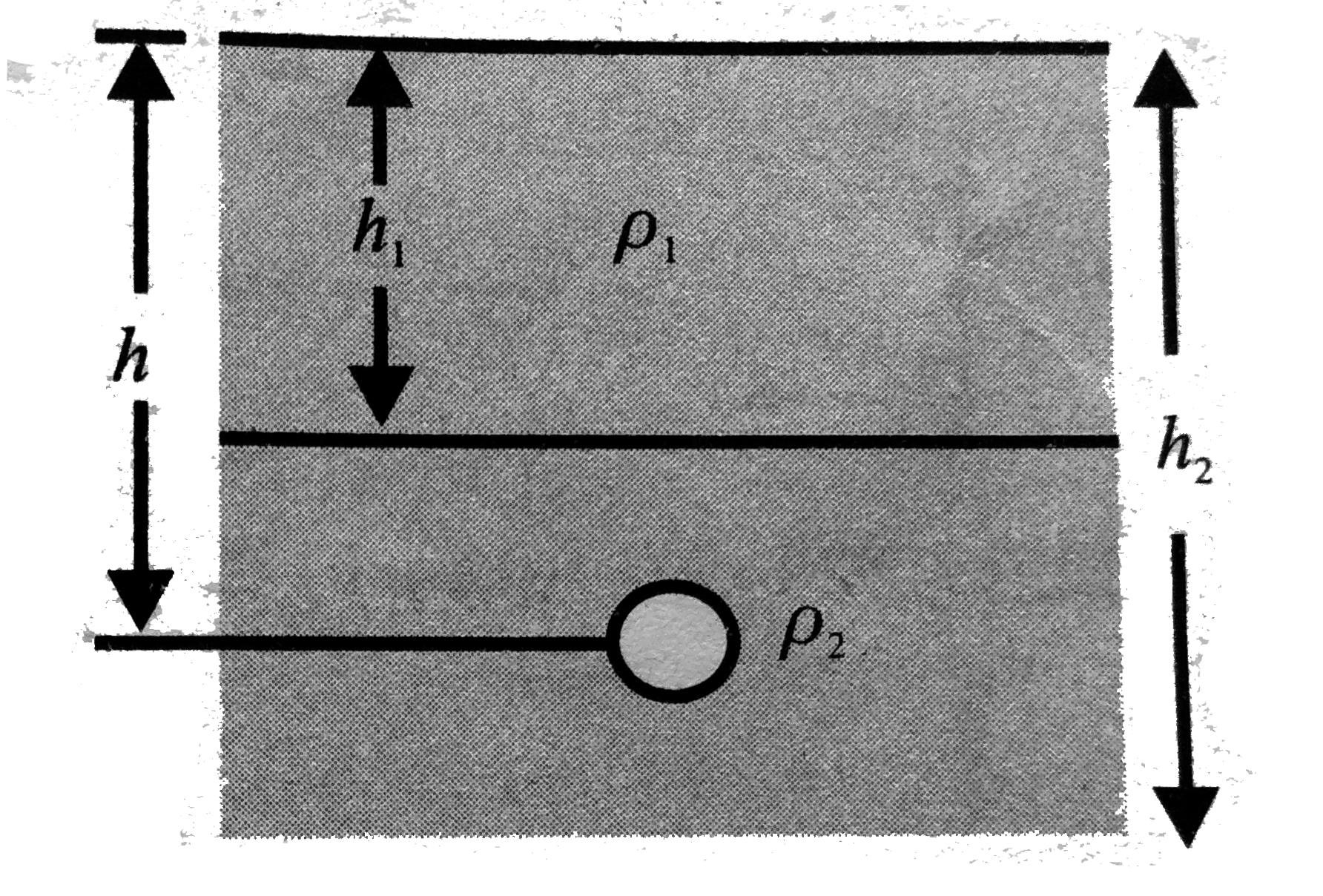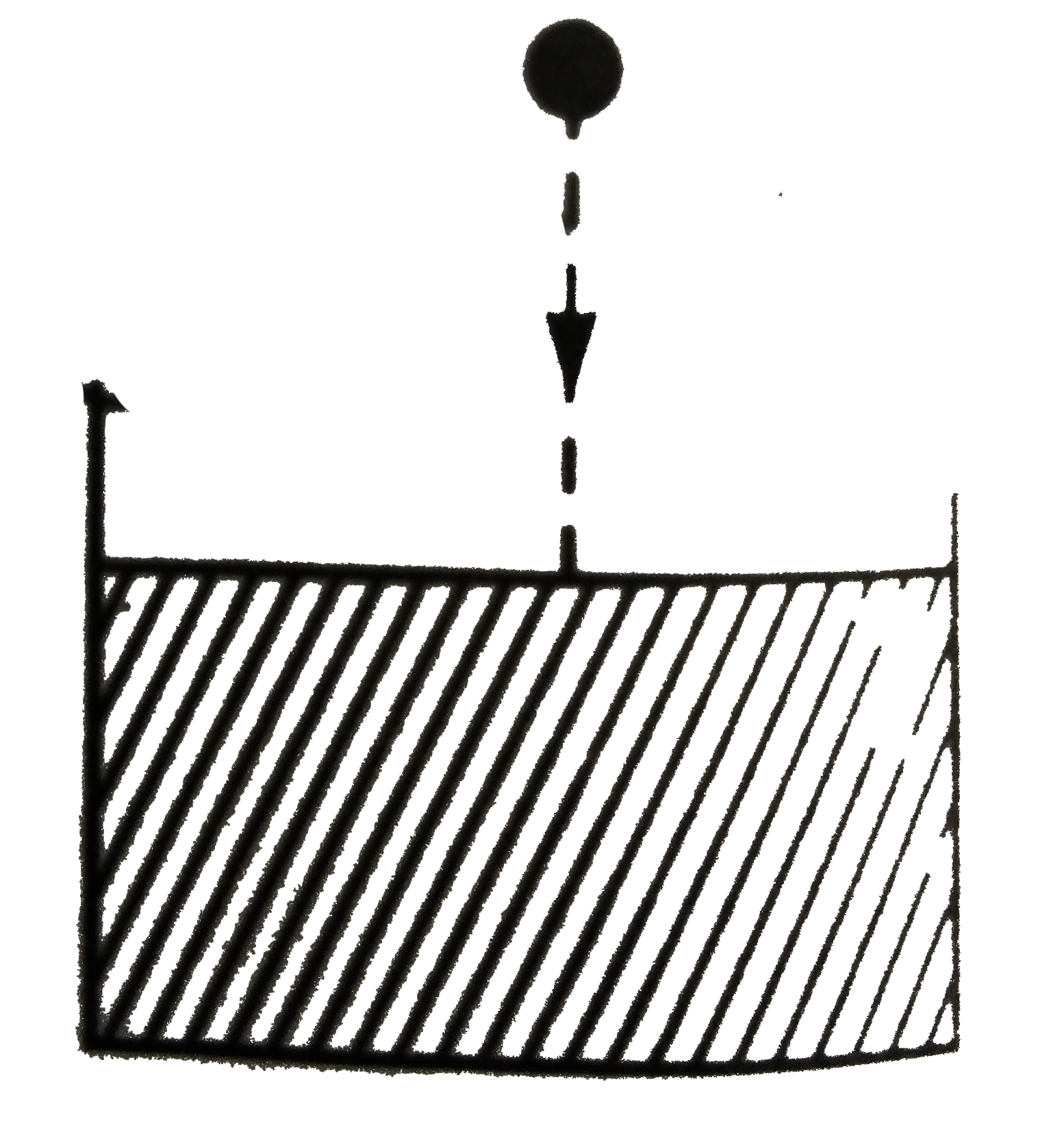The pressure at depth h below the surface of a liquid of density ρ open to the atmosphere is
greater than the atmospheric pressure by ρgh
less than the atmospheric pressure by ρgh
equal to the atmospheric pressure
increases exponentially with depth
The correct Answer is:A
To find the pressure at a depth h below the surface of a liquid with density ρ that is open to the atmosphere, we can follow these steps:
1. Understand the Scenario:
- We have a liquid that is open to the atmosphere.
- The liquid has a density ρ.
- We need to determine the pressure at a depth h below the surface of this liquid.
2. Identify the Atmospheric Pressure:
- The pressure at the surface of the liquid (where it is open to the atmosphere) is the atmospheric pressure, denoted as PA.
3. Apply the Hydrostatic Pressure Formula:
- The pressure due to a column of liquid at a depth h is given by the formula:
Pliquid=ρgh
- Here, g is the acceleration due to gravity.
4. Calculate the Total Pressure at Depth h:
- The total pressure P at depth h is the sum of the atmospheric pressure and the pressure due to the liquid column:
P=PA+ρgh
5. Conclusion:
- Therefore, the pressure at depth h below the surface of the liquid is:
P=PA+ρgh
Final Answer:
The pressure at depth h below the surface of a liquid of density ρ open to the atmosphere is given by:
P=PA+ρgh
- We have a liquid that is open to the atmosphere.
- The liquid has a density ρ.
- We need to determine the pressure at a depth h below the surface of this liquid.
- The pressure at the surface of the liquid (where it is open to the atmosphere) is the atmospheric pressure, denoted as PA.
- The pressure due to a column of liquid at a depth h is given by the formula:
Pliquid=ρgh
- Here, g is the acceleration due to gravity.
- The total pressure P at depth h is the sum of the atmospheric pressure and the pressure due to the liquid column:
P=PA+ρgh
- Therefore, the pressure at depth h below the surface of the liquid is:
P=PA+ρgh
The pressure at depth h below the surface of a liquid of density ρ open to the atmosphere is given by:
P=PA+ρgh
Topper's Solved these Questions
- MECHANICAL PROPERTIES OF FLUIDSBOOK - NCERT FINGERTPS ENGLISHCHAPTER - MECHANICAL PROPERTIES OF FLUIDSEXERCISE - Higher Order Thinking Skills
8 Videos
- MECHANICAL PROPERTIES OF FLUIDSBOOK - NCERT FINGERTPS ENGLISHCHAPTER - MECHANICAL PROPERTIES OF FLUIDSEXERCISE - Exemplar Problems
5 Videos
- LAWS OF MOTIONBOOK - NCERT FINGERTPS ENGLISHCHAPTER - LAWS OF MOTIONEXERCISE - Assertion And Reason
15 Videos
- MECHANICAL PROPERTIES OF SOLIDSBOOK - NCERT FINGERTPS ENGLISHCHAPTER - MECHANICAL PROPERTIES OF SOLIDSEXERCISE - Assertion And Reason
15 Videos
Similar Questions
The absolute pressure at a depth h below the surface of a liquid of density ρ is [Given Pa = atmospheric pressure, g = acceleration due to gravity]
View SolutionA ball of density ρ0 falls from rest from a point P onto the surface of a liquid of density ρ in the time T. It enters the liquid, stops, moves up, and returns to P in a total time 3 T. neglect viscosity, surface tension and splashing find the ratio of ρρ0
View Solution
Knowledge Check
The pressure inside a liquid of density ρ at a depth h is :
AhρgBhρgChρgDhρ
A solid cube of side a and density ρ0 floats on the surface of a liquid of density ρ. If the cube is slightly pushed downward, then it oscillates simple harmonically with a period of
View SolutionCalculate the pressure inside a small air bubble of radus r situated at a depth h below the free surface of liquids of densities ρ1 and ρ2 and surface tennsions T1 and T2. The thickness of the first and second liquids are h1 and h2 respectively. Take atmosphere pressure =P0.

View SolutionFind the total pressure inside a sperical air bubble of radius 0.2 mm. The bubble is at a depth 5 cm below the surface of a liquid of density 2×103 kg m−3 and surface tension 0.082 N m−1. (Given : atmospheric pressure = 1.01 ×105Nm−2)
Hint : Pi=Po+2SR
Po = atmospheric pressure + gauge pressure of liquid column.
View SolutionA liquid of density ρ is filled in a vessel up to height H and a hole of cross section area A is made at a depth h below the free surface of liquid. The speed of liquid coming out of the hole is independent of
View SolutionA ball of density ρ is dropped from a height on the surface of a non-viscous liquid of density 2ρ. Choose the correct options.

View SolutionThere is an air bubble of radius 1.0mm in a liquid of surface tension 0.075Nm−1 and density 103kgm−3. The bubble is at a depth of 10.0cm below the free surface of a liquid. By what amount is the pressure inside the bubble greater than the atmospheric pressure?
View SolutionA point source of light is placed at a depth h=0.5 m below the surface of a liquid (μ=54) , Then , the fraction of light energy that escape directly from the liquid surface is
View Solution
